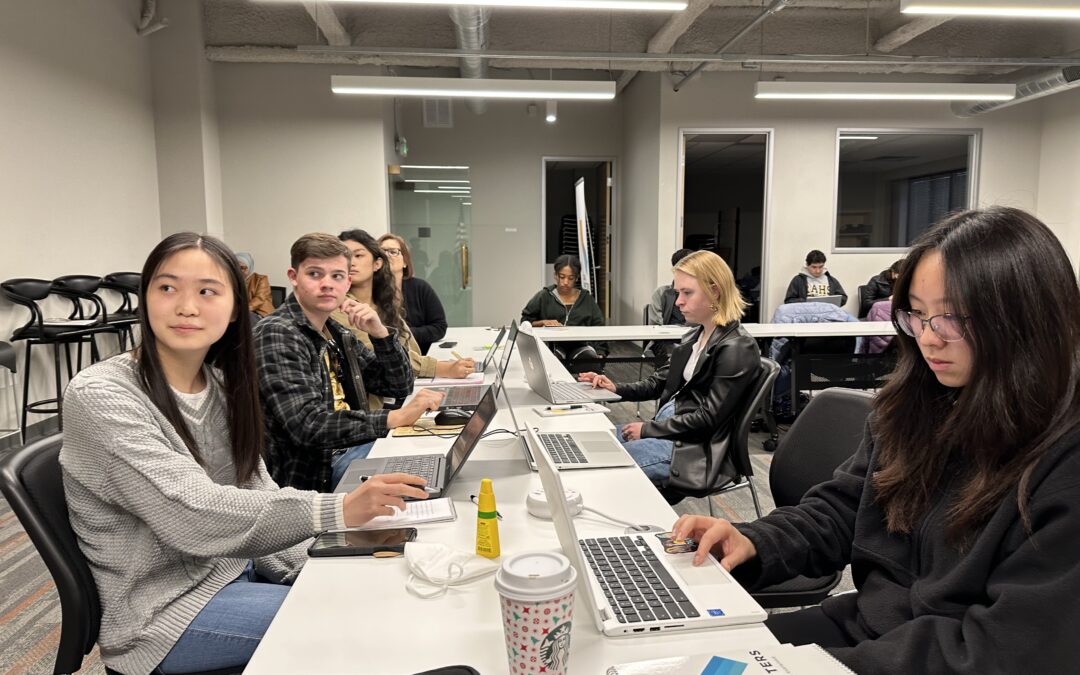I worked on the student-run paper in community college, helping to produce a monthly print edition. With each edition, I had what I realize now may have been a once-in-a-lifetime experience: picking up the papers from the press, piling them onto a large media cart and pushing them to fill the newspaper boxes around campus. Then, I watched the program’s funding get cut—resulting in the end of the print edition. A problem all too common in student journalism programs.
But insecure funding isn’t limited to student journalism—the industry as a whole has experienced massive dislocation and upheaval in the past decade. Newspapers have disappeared from the news ecosystem, leaving some areas without a news outlet to report on crucial local news. These “news deserts” have especially sprung up in smaller, more isolated, and more economically limited regions and towns.
In the places where local journalism has suffered, oftentimes college and university news outlets are the ones filling in the gaps. To address the lack of education coverage and, hopefully, prevent more news deserts, 21 high school students in the Sacramento region are in training to report on education in their schools and districts.
The Student Education Reporter Program, also known as Sacramento School Beat, was founded in early 2020 by Steve O’Donoghue and Louis Freedberg. The program aims to fill news deserts in the region and assure students get the proper training to go on to have successful careers.
“What we need [for high school students] in California is a pipeline that feeds to college programs, [and into] the industry,” said O’Donoghue.
Student reporters in the program produce one story per month that are accepted for publication throughout the academic year. They are paid a $1,200 stipend each academic year they work. Grants from the Dow Jones News Fund, the California Black Media, the Sacramento County Office of Education and the James B. McClatchy Foundation help sustain the program.
“The number one predictor of academic success is family income,” said O’Donoghue, whose program works to address the income gap in schools, often working with students from low-income schools with not many resources. All stories produced by students are provided to local professional media outlets, in addition to publication on the Sacramento School Beat website, said O’Donoghue.
Last month, I spoke to the 2022-23 staff during their week-long intensive hosted at the Cal Matters Headquarters, in the capital city. I talked about how the COVID-19 pandemic impacted the industry, the work I am doing with Jour•Ed and the California Press Foundation and industry specific jobs based on unique interests.
SacSchool Beat Students hear from Danielle McKinney, Outreach Coordinator at Jour•Ed and Tim Crews Fellow at Cal Press, during their summer intensive hosted at the Cal Matters headquarters.
When asked in an anonymous poll about the state of the journalism industry, one student said, “I feel as though, as an ever changing and evolving industry, choosing a career revolved in journalism may be fun but I worry of financial stability.”
The future sustainability of journalism relies on financial stability and non-traditional revenue models. Programs like SacSchool Beat are necessary to help students secure invaluable hands-on experience that will help them transition successfully into the industry.
“I love being part of the Student Education Reporter Program as it has given me an outlet to communicate issues that directly relate to youths,” said student reporter Kayli Huang in her bio on the Sacramento School Beat website.
The goal for O’Donoghue and his program’s supporters is to increase media coverage of local Sacramento County schools and districts and to provide student journalists with knowledge and resources to take them to the next level of reporting. Each academic year, the program accepts applications and brings on new students.
Plans to create similar programs are in the works, including in Contra Costa County, where O’Donoghue is working with the Contra Costa County Office of Education, the Journalism Department at Diablo Valley College, Ed TV and Local News Matters.
It was inspiring to hear from young people and see firsthand how programs like O’Donoghue’s can play a vital role in filling gaps in the industry. As the media landscape continues to change, I am hopeful students will continue to tell the stories that might otherwise go untold and find new ways to embrace the digital age and engage audiences through storytelling.
“Although paper journalism has less of an audience now with the modern technological age, I think digital journalism will become increasingly more important in the years to come,” one student said in the poll.
If you’ve heard that the journalism industry is “dying,” that is simply not true. The industry is changing, and students are the future.

